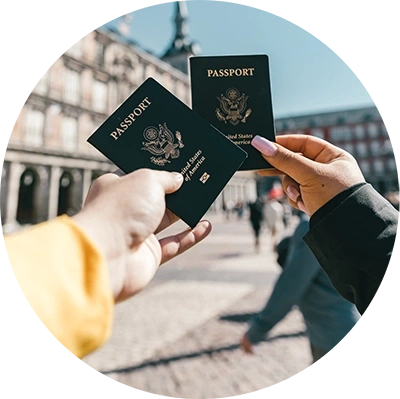Understanding the B-1 Business Visitor Visa Extension Process

The B-1 Business Visitor Visa is a valuable resource for professionals visiting the United States for business purposes such as meetings, conferences, negotiations, and consultations. However, business engagements can sometimes extend beyond the initially permitted duration. This guide provides an in-depth look at the B-1 visa extension process, including requirements, steps, and key considerations to help you extend your stay in the U.S.
What is the B-1 Business Visitor Visa?
The B-1 Business Visitor Visa allows foreign nationals to enter the U.S. temporarily for business activities that do not involve gainful employment. The normal initial duration of stay is up to six months, with the possibility of an extension if needed.
Reasons for Extending Your B-1 Visa
There are several valid reasons for seeking an extension of a B-1 visa, including:
- Unfinished Business: Your business activities require more time than initially planned.
- Unexpected Delays: Delays in project completion or negotiations.
- Additional Meetings: New business opportunities or meetings that arise during your stay.
- Health Issues: Medical conditions that prevent you from traveling as scheduled.
Step-by-Step Guide to Extending Your B-1 Visa
To extend your B-1 visa, you need to follow a series of steps and meet specific requirements. Below is an in-depth explanation of the procedure:
Step 1: Gather Necessary Documents

Prepare the following documents:
- Passport: Ensure your passport is valid for at least six months beyond your requested extension period.
- Current B-1 Visa: Copy of your current visa.
- Form I-94: Arrival/Departure Record.
Supporting Evidence: Documentation supporting the reason for your extension request, such as business letters, medical records, or detailed explanations of project delays.
Step 2: Complete Form I-539
Form I-539, Application to Extend/Change Nonimmigrant Status is required for extending a B-1 visa. Here’s how to complete it:
- Personal Information: Provide accurate personal details.
- Visa Information: Enter your current visa details.
- Reason for Extension: Clearly state and provide evidence for the reason you need an extension.
Financial Support: Prove that you have sufficient funds to support yourself during the extended stay.
Step 3: Pay the Filing Fee
The current fee for Form I-539 is $370. Additionally, there may be an $85 biometric services fee for certain applicants. Fees are subject to change, so check the USCIS website for the latest information.
Step 4: Submit Your Application

Mail your completed Form I-539 and supporting documents to the appropriate USCIS address. It is advisable to use a courier service that provides tracking to ensure your application is received.
Step 5: Await a Decision
The B-1 visa extension processing time varies, so it’s essential to apply well before your current status expires. USCIS will notify you of their decision, which could take several months.
Important Considerations for a Successful Extension
Timeliness
Apply for an extension at least 45 days before your current visa expires. Late applications can lead to complications and potential denials.
Proof of Intent
Provide clear evidence that you intend to return to your home country after completing your business activities in the U.S. This could include a letter from your employer, property ownership documents, or family ties.
Financial Stability
Show that you have sufficient funds to support yourself during the visa extension b1 without seeking employment in the U.S. Bank statements, financial affidavits, or sponsor letters can be used as proof.
Compliance with U.S. Laws

Ensure you have not violated any terms of your current visa, such as unauthorized employment or overstaying your permitted duration. Violations can negatively impact your b-1 extension visa request.
Common Reasons for B-1 Visa Extension Rejections
Understanding the common reasons for B-1 visa extension rejections can help you avoid pitfalls. Some common reasons include:
- Insufficient Documentation: Failing to provide required evidence to support your extension request.
- Lack of Genuine Intent: USCIS may doubt your intent to return to your home country if you don’t provide compelling evidence.
- Previous Violations: Any prior violations of U.S. immigration laws can negatively impact your extension application.
- Financial Issues: Inability to prove sufficient financial means to support your extended stay.
What to Do If Your Extension is Rejected
- Understand the Reason: Review the rejection notice to understand why your extension was denied.
- File an Appeal: If applicable, file an appeal with USCIS. Provide additional evidence or explanations to address the reasons for rejection.
- Seek Legal Assistance: Consult with an immigration attorney to explore your options and improve your chances of a successful appeal.
Extending Other Visitor Visas
If you have family members on a B-2 visa (the tourist counterpart to the B-1 visa), they will also need to apply for an extension if your stay is extended. The process for a B-2 visa extension is similar to that of the B-1 visa and requires submitting Form I-539 and supporting documents.
Additional Visa Extension Options

In some cases, you might be eligible for other types of visa extensions or changes in status, such as transitioning from a B-1 visa to an F-1 student visa or an H-1B work visa. Consulting with an immigration attorney can help you explore these options.
Duration of Stay and Extensions
Initial Duration
The initial duration of stay for a B-1 visa is normally up to six months.
Extensions
Extensions can be granted for an additional six months if justified. The total stay should not exceed one year unless there are exceptional circumstances.
How to Extend Your Stay Beyond the B-1 Visa
If you require more time beyond the extension period, consider other visa options that match with your long-term goals in the U.S. Transitioning to another visa category may involve additional requirements and applications, which is why professional legal advice is recommended.
Tips for a Successful B-1 Visa Extension
- Start Early: Start the visa extension procedure well in advance of the day on which your existing visa expires.
- Organize Your Documents: Make sure all necessary paperwork is accurate and well-arranged.
- Be Honest and Transparent: Provide truthful and accurate information in your application.
- Seek Legal Assistance: Consulting with an immigration attorney can improve your chances of a successful extension.
Understanding the B-1/B-2 Visa Extension Process

The B-1/B-2 visa extension process requires a thorough understanding of the eligibility criteria and application procedures. Here’s a detailed guide:
- Eligibility Check: Confirm that you are eligible to apply for an extension. Ensure you have a valid reason for the extension, such as unfinished business activities or medical reasons.
- Document Preparation: Collect all necessary documents, including your passport, Form I-94, current visa, and any supporting evidence.
- Form I-539 Completion: Accurately complete Form I-539. Make sure the form is signed and includes all necessary details.
- Submission of Application: Submit your application along with the filing fee to the appropriate USCIS office. Include all supporting documents.
- Biometrics Appointment: If required, attend the biometrics appointment to provide fingerprints and photographs.
- Follow-up: Monitor the status of your application through the USCIS website or contact their customer service for updates.
- Decision Notification: USCIS will notify you of their decision. If approved, you will receive a new Form I-94 indicating the extended stay period.
Conclusion
Extending your B-1 Business Visitor Visa is a detailed process that requires careful preparation and understanding of U.S. immigration laws. By following the guidelines outlined in this article, you can understand the extension process more effectively and increase your chances of approval.
For professional assistance with your B-1 visa extension or any other immigration-related matters, contact Passage Law. Our experienced attorneys are here to help you every step of the way.
Visit Passage Law for expert guidance on your B-1 Business Visitor Visa extension. Schedule a consultation with our immigration attorneys to ensure a smooth and successful extension process.
